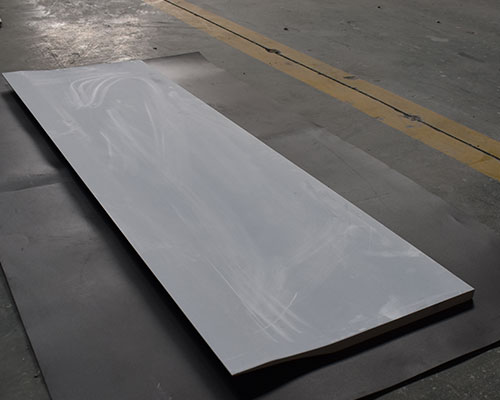Caster nozzle is used for crystallization forming and size control of aluminum sheet, strip and foil blank in casting and rolling production line.
Caster nozzle is the key part of conveying molten aluminum in the production of aluminum alloy casting and rolling. The structure of the nozzle will directly affect whether the melt can enter the casting and rolling area from the nozzle cavity uniformly and stably, thereby affecting the quality of the sheet. Therefore, the nozzle structure plays a key role in stabilizing the casting and rolling process and improving product quality.
Caster Nozzle Production Process
1. Wash cotton to remove slag balls;
2. Dry the clean cotton;
3. Put the cotton and several other materials into the mixer of the vacuum suction rate press according to the ratio, and stir evenly;
4. Put the slurry into the mold box of the vacuum suction rate press, and carry out suction rate pressing to make the green body reach a certain thickness;
5. Put the blank into two cast iron fixture plates (weight of fixture plate: 300kg/piece);
6. Hang the fixture plate together with the blank into the casting nozzle fixture hydraulic press for pressing, so that the blank reaches a fixed thickness, and lock and fix the fixture plate and the blank with a buckle;
7. The locked fixture plate (with blank) is fired in the furnace;
8. The fired nozzle plate can be machined to obtain products that meet customer requirements.

The aluminum casting tip is located in front of the rolls in the aluminum alloy domain rolling equipment to guide the aluminum alloy. The liquid aluminum liquid enters the pouring port from the feed port at the rear end, and then is sent out from the discharge port at the front end, enters the roll, cools at the roll, and is rolled into a billet.
Usually the width of the cast billet is determined by the outlet width of the nozzle. In order to improve the utilization rate of the equipment and reduce the operating cost, the width of the plate produced by ordinary casting and rolling equipment is relatively wide, generally reaching 1450mm-1600mm.
For cast-rolled steel billets with a width of less than 800mm, if the traditional equipment structure and production method are used for production, the unit output will decrease.

